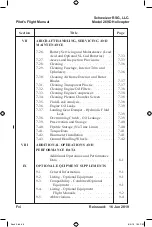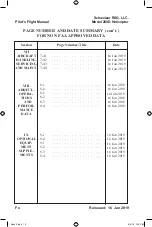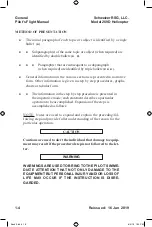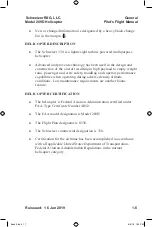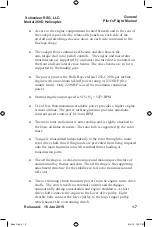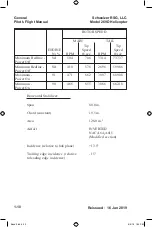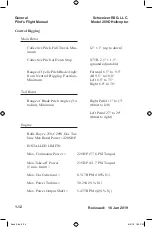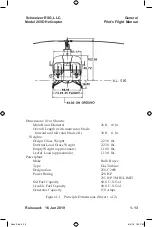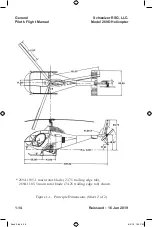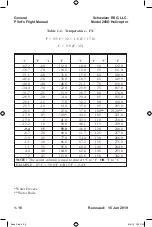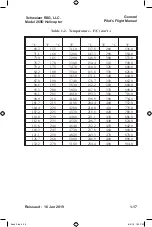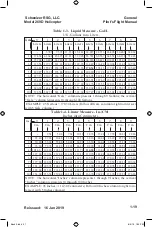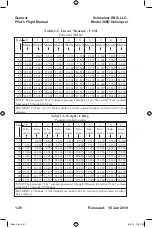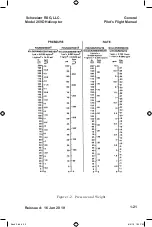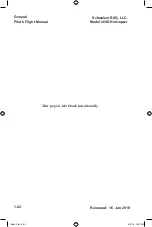
Access to the engine compartment located beneath and to the rear of
the cockpit is provided by removable panels on each side of the
aircraft and also hinged access doors on each side contoured to the
fuselage shape.
The cockpit floor contains keel beams and also houses the
anti-torque (tail rotor pedal) controls. The engine and main rotor
transmission are supported by a tubular structure that is mounted on
the front and rear lateral cross beams. The cross beams are in turn
supported by the landing gear.
The power plant is the Rolls Royce Model 250-C20W gas turbine
engine with a maximum takeoff power rating of 235 SHP (five
minute limit). Only 220 SHP is used for maximum continuous
power.
Normal engine output speed is 91% N
2
= 5475 RPM.
Use of less than maximum available power provides a higher engine
critical altitude. The power turbine governor provides automatic
constant speed control of N
2
/rotor RPM.
The main rotor static mast is non-rotating and is rigidly attached to
the basic airframe structure. The rotor hub is supported by the rotor
mast.
Torque is transmitted independently to the rotor through the main
rotor drive shaft, thus lifting loads are prevented from being imposed
onto the main transmission with resultant thrust loading of
transmission parts.
The aft fuselage is a semi-monocoque and monocoque structure of
aluminum alloy frames and skin. The aft fuselage is the supporting
attachment structure for the stabilizers, tail rotor transmission and
tail rotor.
The overrunning clutch transmits power from the engine to the drive
shafts. The clutch needs no external controls and disengages
automatically during autorotation and engine shutdown. A short
drive shaft connects the engine to the lower drive pulley. Eight
flexible belts connect the lower pulley to the larger upper pulley
which houses the overrunning clutch.
General
Schweizer RSG, LLC.
Model
269D
Helicopter
Pilot's Flight Manual
1-7
Reissued:
16
Jan
2
019
Book 3.indd 19
8/4/19 1:25 PM


